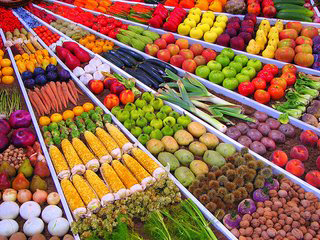“Eat Right with Color.”
Kristin Klinefelter, registered dietitian with Medsave Family Pharmacy and Wellness Center, said, “eating your colors” is a concept that all age groups can incorporate.
“No matter what kind of group or client I am talking to, I can incorporate education about the importance of colorful fruits and vegetables,” she said. “Children love the challenge of ‘rating their plate’ to see what colors of the rainbow they are eating, and adults with all medical conditions or wellness goals can incorporate color and get excited about it.”
Use this quick color guide to add color to meals and snacks:
Green produce indicates antioxidant potential and may help promote healthy vision and reduce cancer risks.
– Fruits: avocado, apples, grapes, honeydew, kiwi and lime.
– Vegetables: artichoke, asparagus, broccoli, green beans, green peppers and leafy greens such as spinach.
Orange and deep yellow fruits and vegetables contain nutrients that promote healthy vision and immunity, and reduce the risk of some cancers.
– Fruits: apricot, cantaloupe, grapefruit, mango, papaya, peach and pineapple.
– Vegetables: carrots, yellow pepper, yellow corn and sweet potatoes.
Purple and blue options may have antioxidant and anti-aging benefits and may help with memory, urinary tract health and reduced cancer risks.
– Fruits: blackberries, blueberries, plums, raisins.
– Vegetables: eggplant, purple cabbage, purple-fleshed potato.
Red indicates produce that may help maintain a healthy heart, vision, immunity and may reduce cancer risks.
– Fruits: cherries, cranberries, pomegranate, red/pink grape fruit, red grapes and watermelon.
– Vegetables: beets, red onions, red peppers, red potatoes, rhubarb and tomatoes.
White, tan and brown foods sometimes contain nutrients that may promote heart health and reduce cancer risks.
– Fruits: banana, brown pear, dates and white peaches.
– Vegetables: cauliflower, mushrooms, onions, parsnips, turnips, white-fleshed potato and white corn.
